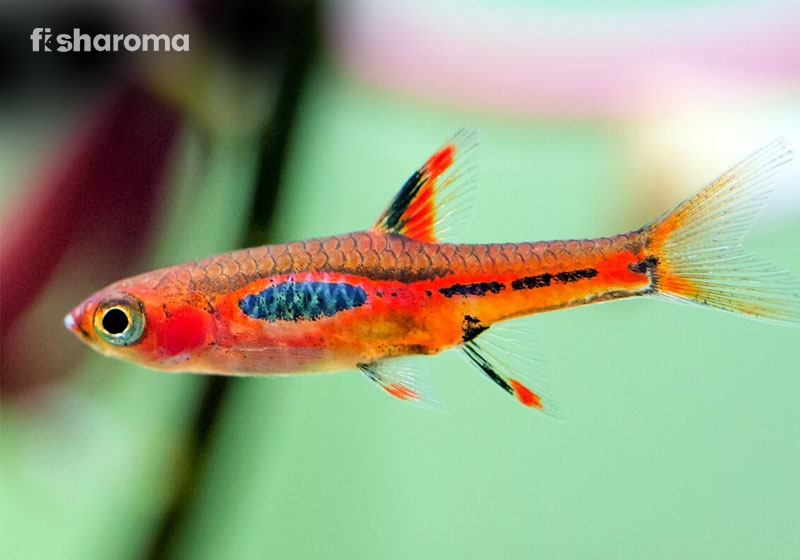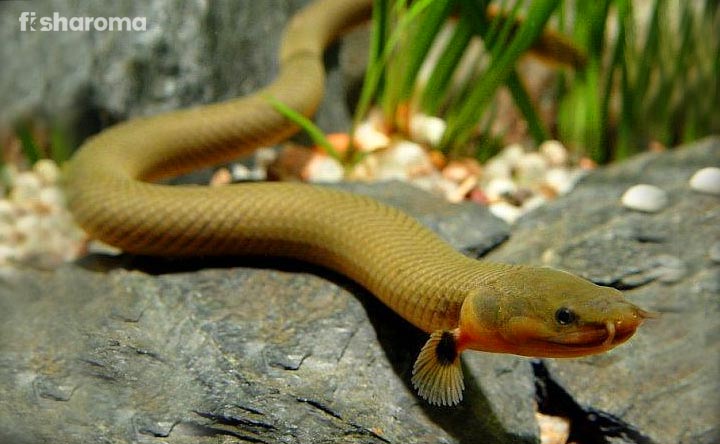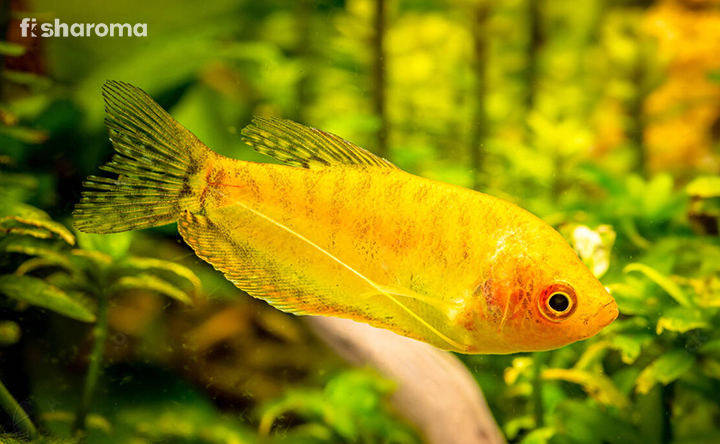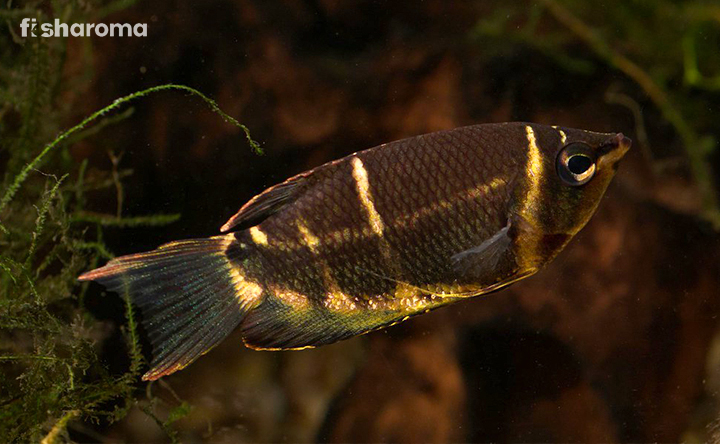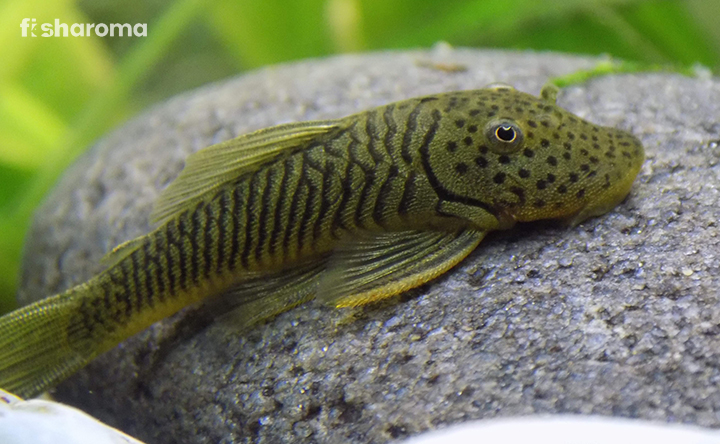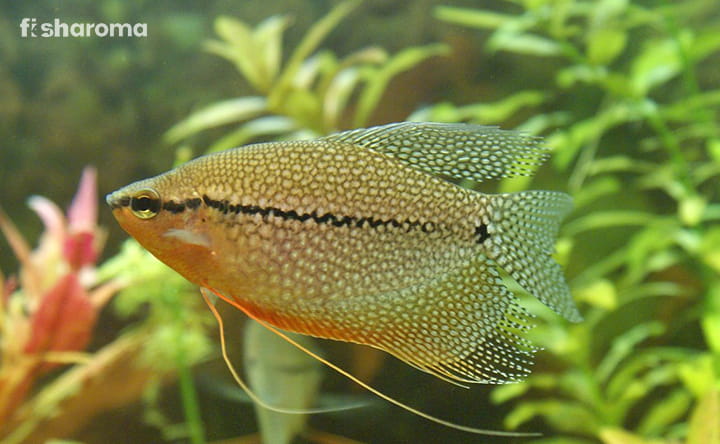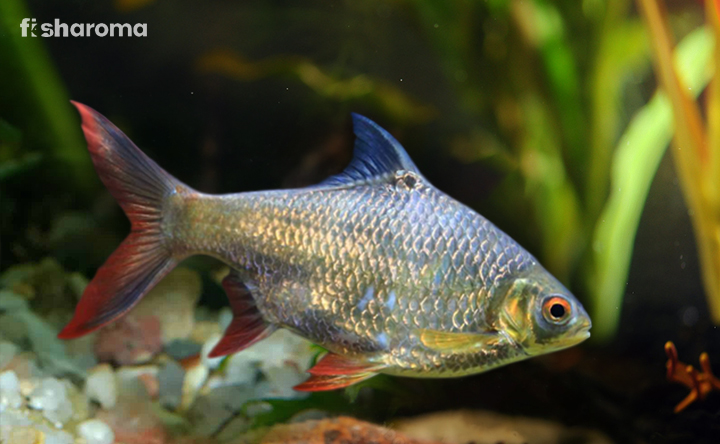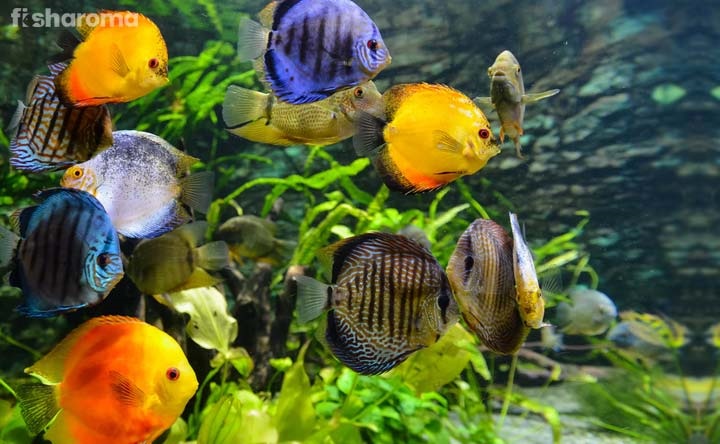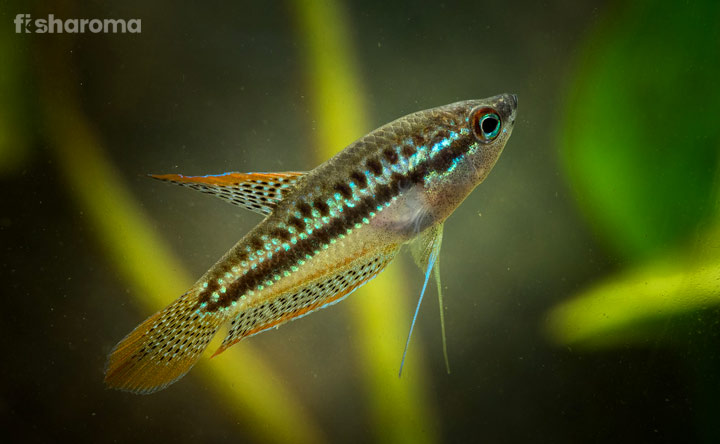A Complete Care Guide to Platy Fish
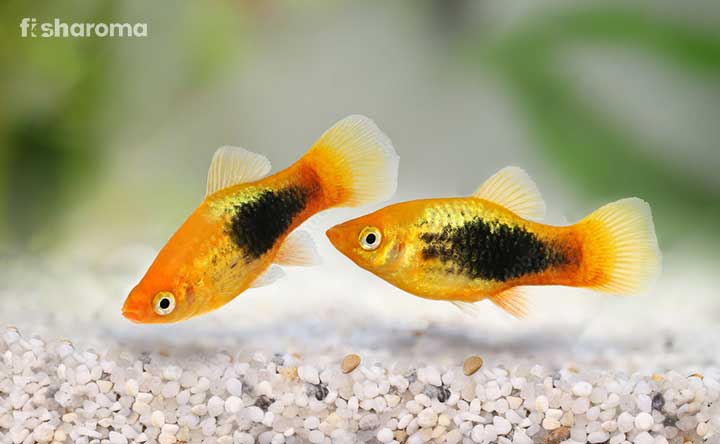
Platy Fish is freshwater aquarium live-bearer, that is native to Central America and Mexico. These fishes are extremely peaceful, easy-to-care and community aquarium fishes that are available in mesmerising colours. Since their introduction in 1907, they have been very much in demand among beginners as well veteran fish-keepers.
This article is an all-inclusive care guide, where you will find different ways to maintain their feeding, breeding and tank requirements.
Key Specifications of Platy Fish
Before we dig into every aspect of keeping and caring Platy Fish, let us have a look into their key specifications.
| Scientific Name | Xiphophorus maculatus |
| Origin | Mexico and Central America |
| Lifespan | 3-5 years |
| Colours | Variance of colour |
| Temperament | Peaceful |
| Size | 2-2.5 inches |
| Diet | Omnivorous |
| Family | Poeciliidae |
| Compatibility | Peaceful with other small fishes |
| Tank Size | 10 gallons |
| Care Level | Easy |
Overview
Platy Fish, from Poeciliidae family, belongs to Xiphophorus genus, where ‘Xiphos’ means ‘sword’ and ‘Pherein’ means ‘to carry’ in Greek language, which perfectly goes with the fact that these fish carry sword-like tails.
Platy is a common name for three beautiful species, namely:
- The Southern Platy (Xiphophorus maculatus)
- The Variable Platy (Xiphophorus variatus)
- The Swordtail Platy (Xiphophorus xiphidium)
These three species are crossbred among one other, which results in a range of magnificent colours on their body. The different varieties that come from this crossbreeding are Mickey Mouse, Sunburst, Blue, Red wag, Green lantern and Bumblebee Platies.
Though their care level is easy, for them to withstand a captive environment, you must put in efforts to make them happy.
Origin and Habitat of Platy Fish
Native to Central America and Mexico, these fishes have a small lifespan and a hardy nature. They live for three years and if given proper diet and care, they can live up to five years. They like dense vegetation in their aquarium vicinity because in wild, they are habituated in marshes, ditches, canals and warm springs, which also states that they prefer warm water.
These small tropical fish inhabit three different regions of America:
- The Southern Platy Fish is found in freshwater of Mexico and Northern Honduras
- The Variable Platy Fish inhabit in Southern water of Mexico, i.e., from Rio Panuco to Rio Cazones
- The Swordtail Platy is native to the rivers of Rio Solo La Marine
They are very much comfortable in small water bodies, where there is absolutely no current, and the presence of salty silt beds.
Appearance of Platy Fish
Despite being drab-coloured in their wild habitat, these species come with bright and sparkling colouration when crossbred in a hatchery. These fishes have a pointed nose, large eyes and a comparatively thick body. Their dorsal fins are very prominent and Platy Fishes look distinctive since their bodies taper down towards the tail. With caudal fins and sword-shaped tail, Platy Fishes possess an inquisitive look that one can hardly miss. The different colouration of their body is amazing as that goes with different patterns of their body.
Wagtail – black-coloured fins and tail
Variegated – they have black blotches all over their body
Twin bar – tail has two black edges
Tuxedo – black on back portion and a different colour on front: just like tuxedo
Mickey Mouse – three spots before the tail: a Mickey Mouse symbol
Most people simply refer to these fishes as Platy Fish because, owing to the interbred phenomenon, the two species look entirely identical. Moreover, you must look minutely to find out the difference between females and males because, at one glance, they look similar. But sometimes, females become larger than males and can elongate almost an inch than normal size. These female Platy Fishes tend to have a bulbous midsection.
Colour
These fishes come in variant colours like blue, red, green, golden and black. But if you see a wild Platy, it will not be that much amazing because, as mentioned earlier, they are naturally dull drab-coloured, and become stunningly colourful when crossbred.
Size
Platy Fishes are roughly 2-2.5 inches in size. Though the females, owing to their bulbous midsection, can grow up to three inches.
Behaviour of Platy Fish
As we have already stated above, Platy Fishes are peaceful in nature. They are quite cheerful when you keep them in the community with small groups, but that does not make them shoaling fish. These fish are very active among their peers and spend most of their time swimming in the middle water column. Moreover, you must plant ample vegetation in their tank because they like to hide between floating plants at play.
This peaceful species might get aggressive in a rare situation, where they want to overwhelm the females, but the ratio is unbalanced.
These highly energetic Platy Fishes are active swimmers and can jump!
Lifespan of Platy Fish
These fish do not need much pro-level care but yes, provide the proper diet and environment to stay healthy! If you do not provide proper vegetation in their vicinity, they will become stressed and gradually face an untimely death.
With proper food, timely breeding procedures and a warm atmosphere, they can live up to almost 5 years.
Diet of Platy Fish
These fishes are omnivorous by nature. In their natural habitat, they thrive on small worms, crustaceans, insects and plants. Though they are considered omnivorous fish, they prefer a herbivorous diet in an aquarium. They are not fussy eaters and can live healthily if you provide them with highly nutritious vegetables.
They can eat every type of food; be it commercially prepared, live or frozen. You must choose a flake quality and vitamin-rich food so that they produce a good colouration and the core of their diet is satisfied. You need to supply them with squash, spinach, cucumber and spirulina, but positively change their diet twice a week and give brine shrimp, tubifex and blood-worms so that they do not deficit meaty proteins.
Feed Platy Fish with a small quantity of food several times. A large amount of food at one go can bloat their digestive system.
Remember, you must give them food that can be finished within 2-3 minutes.
Tank Requirements of Platy Fish
Let us take a look at a few things that you must keep in mind while setting the tank of Platy Fish.
Tank Size
These fishes are not significantly large aquatic ones as they can easily dwell in a 10-gallon water tank. You are free to keep a group of the same species and still, they do not mind sharing their space.
However, large tanks are never a bad idea because these fishes are very active and they intentionally jump to have fun. Moreover, as we said they are active swimmers and love to explore the nook and corners of their residence. So, you can prefer a voluminous tank to keep them jovial and active all through their lifespan.
Tank Lid
Using a tight lid will keep the aquarium safe from any other of your pets. Further, a tight lid will ensure there is no dirt and dust accumulated in the tank.
Always keep the lid sturdy and hard, as we have already mentioned that Platy fishes jump out of their dwelling area. You must keep at least a gap of four to five inches between the tank lid and water level so that the skilled jumpers do not hurt themselves while jumping.
Filter
A strong filtration with high media types is recommended for a Platy Fish tank. These little things need water to flow in a length-wise direction, so that they can move easily and as they are used to no-current water in the wilds, you must keep the water movement very low within the tank.
Avoid aerating the water regularly and rely primarily on filters for aeration. You must avoid putting any wave-maker, power-heads or strong flow filters within their tank.
Substrate
The Platy Fishes like to dwell in soft substrates like gravel and sand. Keep dark-coloured substrates so that their colour gets highlighted. But remember, the sand must have fine grains because they are small in size, so any large substrate rock will hurt them.
Avoid using any colour in the tank set-up as this might create infections on their skin.
Ornaments
These little ones like to hide in caves and rocks at play. Keep driftwoods, caves and castles to allow them to get enough space for activity, but keep sure the holes of caves are big so that the fish do not get stuck there.
Presence of Flora
In their natural habitat, they are surrounded by dense vegetation and thick plants, which they demand in their homely aquarium also. Make the tank heavily planted but these should depend on species. If you are not taking any crossbreed at home and opting for the parent species then you must follow our guide to know aquarium type according to the species.
The Southern Platy Fishes prefer a loosely decorated aquarium having only a few ferns and moss. But if you have Variable Platy Fish, then keep Hornwort, Java Moss, Amazon Frogbit and Duckweed. On the other hand, for crossbreed species, you need to make an equivalence in decorating the tank by using simple plants and keeping more space for activities.
Whatever you choose, ensure to leave an open area for them to swim.
Lighting
You can keep normal fluorescent lighting to decorate and customize the aquarium. Platy Fishes are not light sensitive. Even if you keep the fish aquarium in natural daylight, still they will actively play inside.
Cleaning Method
It is of utmost importance that you keep the tank clean so that the fish stay healthy. We recommend all fish-keepers clean the tank at least once a month.
In order to clean the interior of the tank, you must use a soft cloth dipped in warm water to remove dirt. For cleaning the substrates and removing algae, put the fish in another bowl with the same water parameters and hold the aquarium under running water. However, do not use any soap or chemical-based product as this leaves a residue, which becomes harmful for the fish, even after cleaning off.
Water Type for Platy Fish
Come, let us shed some light on the type of water that you must provide for keeping them healthy. Make sure, all parameters are satisfied before you add these little jumpers to your tank.
Temperature
We suggest keeping proper water temperature, which should be between 20-22 Degrees Celsius. Since Platy fishes dwell in warm springs in the wild, when kept in a home aquarium, they need the same temperature range. Their colour reflections become brighter if they dwell in this normal range of temperature.
Platy Fish can tolerate temperature fluctuations, but that does not imply you will change the range suddenly and often. Make them habituated with new temperature by slowly changing it.
Please note, Swordtails are extremely sensitive to the bad environments and can face untimely death because of water impurity.
pH Level
The required pH Level for the aquarium of Platy Fish is 7-8.
Hardness
The carbonate water hardness must be maintained at a level of 4-8 dKH and general hardness must be 12-18 dGH.
Minerals
These fishes
prefer to reside in alkali-based surroundings with a typical clearance in water. Fish dwell in water and naturally drop their faeces in the water, which gradually break to create ammonia, a highly poisonous substance.
The way to get rid of this toxicity is to implant a nitrogen cycle within the tank. The natural process of nitrogen generation will detoxify ammonia by transforming it into something fairly benign.
Replacement Procedure
At the time of replacing the water, keep all parameters (temperature, filter flow, pH level and minerals-all as stated above) the same as before. You must not remove the whole water at one go, rather opt for changing half of the water at once. Remember, changing the whole water will remove all beneficial bacteria and natural removal of ammonia will be stopped.
Compatibility of Platy Fish
These are not schooling fish, but you will be surprised to know that they love being in groups. For creating a school, you can keep 5 of the same species together. But you must not forget to keep at least three females for one male. This species is a prolific breeder and they love to overwhelm females. In order to resist one female from the continuous chase of a male, keep the ratio proper.
Suitable Tank Mates
A few ideal tank mates for Platy Fish can be:
- Molly Fish
- Cory Catfish
- Harlequin Rasbora
- Zebra Danio
- Celestial Pearl Danio
- Neon Tetra
- Rainbowfish
- Freshwater Snails
Unsuitable Tank Mates
As such, these species are peaceful and do not mind sharing their territory with others. However, it can be problematic to keep Swordtails and Guppies with them. The males of these species tend to harass females of Platy species by trying to mate with them.
Moreover, you are recommended not to keep any aggressive fish like Tiger Barb, Bucktooth Tetra, Afer Knife and Red Tail Shark with them. Afer Knife and Bucktooth Tetra, among all, are most notorious as they are predatory, nip off scales of other fish and eat them away.
Breeding of Platy Fish
As we said earlier, these fishes are profuse breeders. They love to mate and as you keep the couples, they will fill your tank with babies in no time.
The fish are extremely identical and you cannot differentiate till they are at least four months and at this age, sexual dimorphism is very natural. Females grow a bit larger and males grow colouration and develop anal fins that take shape of a rod, which is their main reproductive organ – known as a gonopodium.
Platy fishes keep their eggs within their body till they are ready to hatch. At an interval of 4 weeks, they brood a new group of fries and a group of fries contains 20-25 babies. These fish do not show any parental behaviour and the ravenous horde of adults generally eat their babies, so, you must take the fries in a separate tank. Put enough algae, aufwuchs and uneaten foods and they will happily munch on that.
Disease and Treatment of Platy Fish
While you pet different fishes, you need to be aware of their diseases and more likely about their symptoms, so that you can take necessary steps before their health turns worst. The choice of Platy Fish is excellent for a home aquarium, but they catch diseases like fin rot very easily. You can add antibiotics like chloromycetin or tetracycline to their food to prevent the diseases. Often, the females have signifying white spots in the belly and suffer breathing issues, which are signs of Ich disease.
Sometimes, they have small gold coloured dots and bleeding lesions like cysts. This is the advanced stage of velvet disease. Immediately remove any artificial lighting and quarantine them. Contact the veterinarian and once they get cured, perform 90% water change to disinfect their residence.
Summary
These fish are not scavengers, but yes, they eat away their off-springs. Moreover, they enjoy algae, so keep little algae instead of cleaning the whole substrates.
However, these pocket-friendly pets are for everyone!
Care Guide to other similar pets
We hope you found these care guide good enough to answer your need. If you want something similar on other fishes, visit our relevant sites.
- Care Guide to Clown Killifish: This species is one of the most magnificent swimmers and gracefully dwell in your freshwater home tank.
- Care Guide to Jewel Cichlids: These fish embellish your aquarium and are of aggressive nature. Read our guide before bringing them home.
- Complete Care Guide to Oscar Fish: Despite being highly aggressive and territorial in nature, this species is a total beauty to your aquarium.

